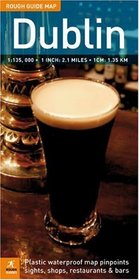Search -
The Rough Guide Dublin Map
The Rough Guide Dublin Map
Author:
INTRODUCTION A vibrant and compact city, Dublin has a pace and energy quite at odds with the relaxing image of Ireland as a whole. Prosperity generated by the Republic's economic boom in the 1990s has brought fundamental changes to the life of its capital, reversing the tide of emigration and creating a dynamic cultural centre. Visitors and Dubl... more »
Author:
INTRODUCTION A vibrant and compact city, Dublin has a pace and energy quite at odds with the relaxing image of Ireland as a whole. Prosperity generated by the Republic's economic boom in the 1990s has brought fundamental changes to the life of its capital, reversing the tide of emigration and creating a dynamic cultural centre. Visitors and Dubl... more »
ISBN-13: 9781843530053
ISBN-10: 1843530058
Publication Date: 5/20/2002
Rating: ?
ISBN-10: 1843530058
Publication Date: 5/20/2002
Rating: ?
0 stars, based on 0 rating
Genres:
- Reference >> Atlases & Maps >> Travel Maps
- Travel >> Europe >> Ireland >> General
- Travel >> Europe >> Ireland >> Dublin




